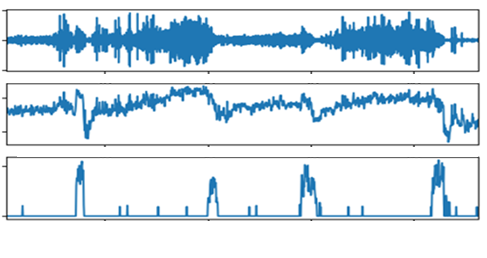Vehicle Onboard Health Monitoring - Drive, Brake and Steering Noises
-
Test Object:
NEVs -
Application Scenario:
Vehicle Onboard Health Monitoring -
Challenges:
- Abnormal noises from vehicle powertrain, brake, and steering systems in motion are signals calling for maintainence, if not repair. The reliability of these systems is critical to safety, which is why real-time monitoring of their condition is of utmost importance.
- Abnormal noises from the powertrain are often mixed with vehicle interior noise and is characterized by a certain level of stochasticity and time-variability, making it difficult to being accurately identified.
- The limited computing power of onboard chips puts high demands on the algorithms.
-
Method of Evaluation:
- The Vehicle Onboard Health Monitoring System, OHm, learns to classify normal sounds from abnormal noises collected from the vehicle in motion, and subsequently builds and trains failure models for better identification.
- Through optimizing algorithms and models, OHm reduces the consumption of computing power by performing calculations more efficiently.

Figure 1 Abnormal noises under a complex noise environment inside a car being accurately identified using OHm
Related application cases
-
Hybrid Powertrain End-of-Line Quality Test - Gear Nick
-
Electric Drive System End-of-Line Quality Test - Abnormal Parts
-
Electric Motor End-of-Line Quality Test - Abnormal Noise
-
Electric Motor End-of-Line Quality Test - Eccentricity
-
Heavy-Duty Truck Axle End-of-Line Quality Test - Gear Mesh Noise
-
Commercial Vehicle e-Axle Performance and Durability Test - Periodic Noise
-
Vehicle Onboard Health Monitoring - Drive, Brake and Steering Noises
-
Electric Drive System Early Failure Diagnosis - NVH Degradation